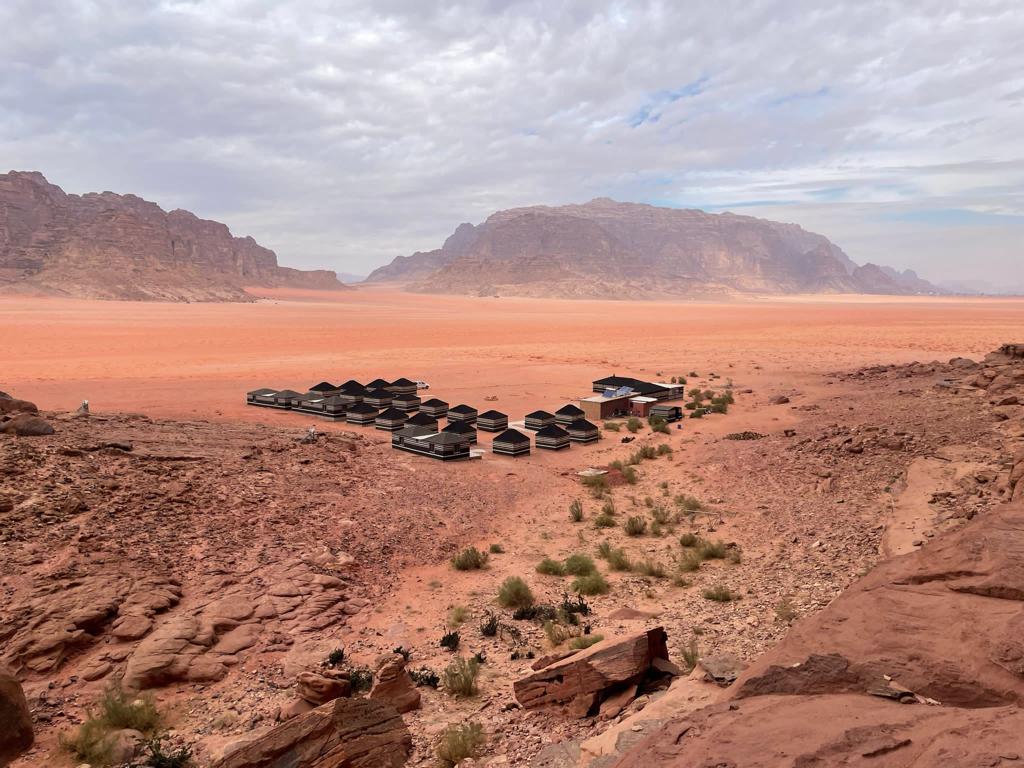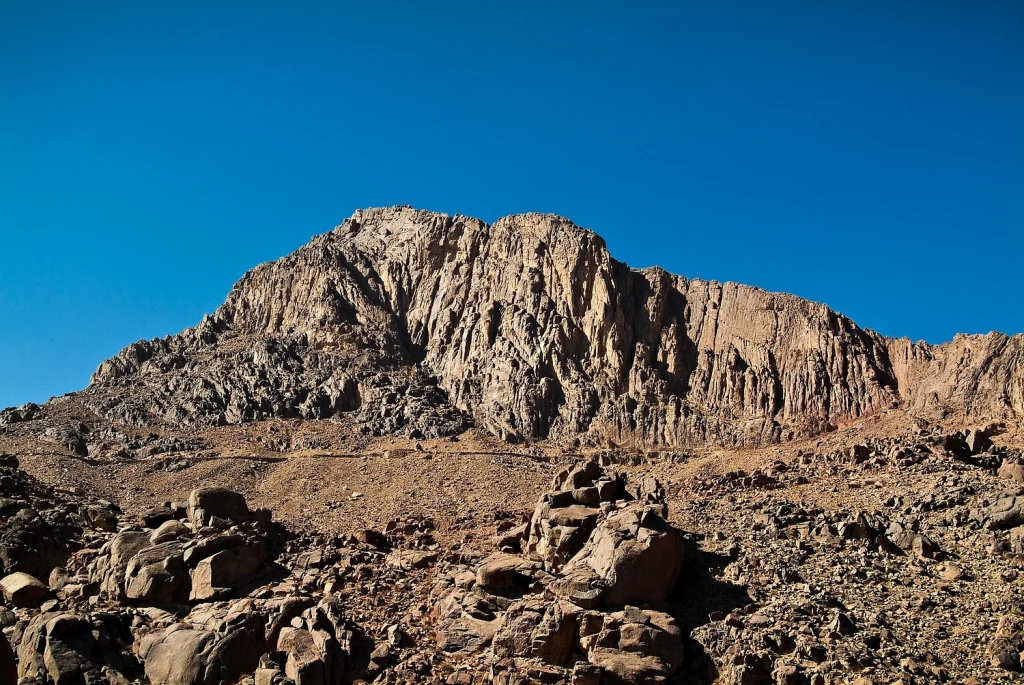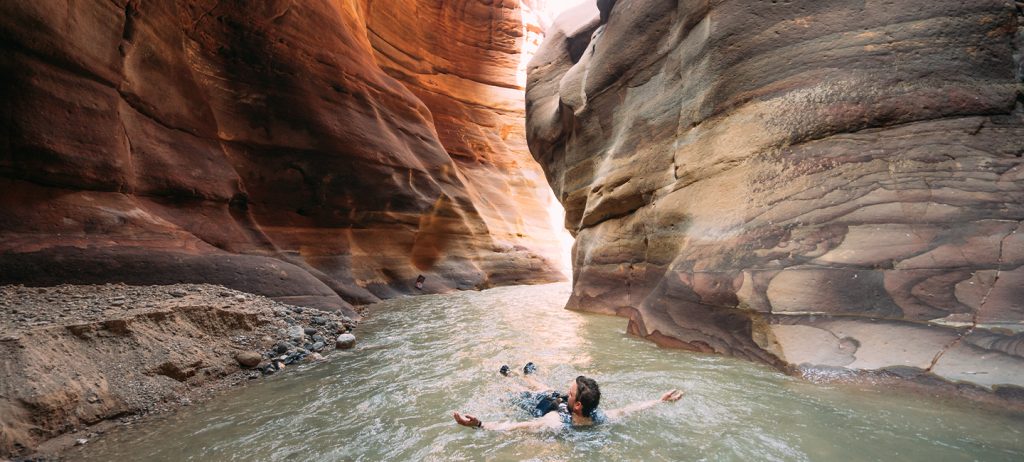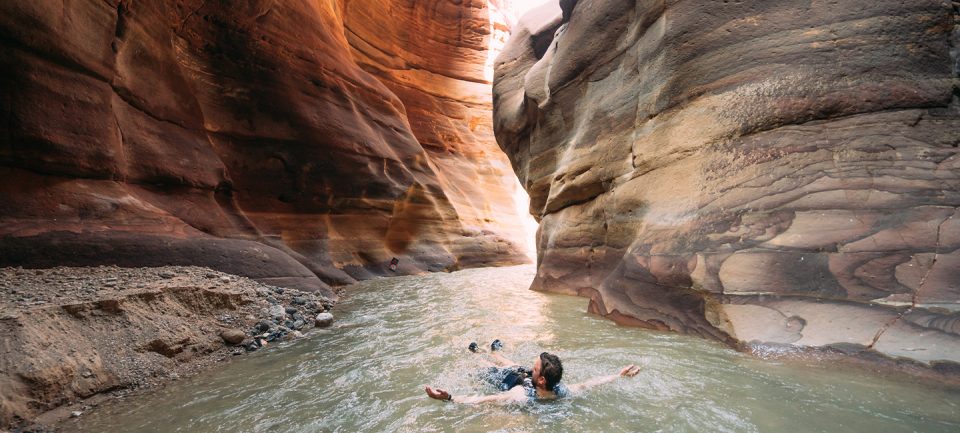Are you an adventure seeker craving a deeper cultural connection? The Middle East offers more than camel rides at the Pyramids or Dubai dune bashing, it’s a region that rewards the curious and respectful traveller with experiences that touch the heart, not just pump the heart. So, if you seek adrenaline with depth and meaning, let these Arab-centric adventures be your guide.
Here’s four unique adventures across the Middle East that blend adventure with rich history and tradition.
1. Camel Caravan, Wadi Rum, Jordan

Wadi Rum is a protected wilderness and UNESCO World Heritage site in Southern Jordan. Tours start from the village of Rum and experienced Bedouin guides lead multi-day camel safaris deep into the reserve.
Trek across the red sands of Wadi Rum by camel, guided by local Bedouins. By day, you’ll ride beneath rust-colored cliffs and natural arches, by night, camp under the stars with Bedouin hosts sharing music and mint tea by the fire.
Why it’s culturally significant
Wadi Rum has been home to nomadic tribes for millennia, petroglyphs and inscriptions on its rocks date back 12,000 years of human history, during your experience you can visit sites like Lawrence’s Spring, a key watering hole from history.
Unlike a quick tourist camel ride, this is a journey back in time, you travel as the Bedouins have for generations experiencing the nomadic way of life that few outsiders get to witness.
2. Night Hiking Mount Sinai, Egypt

A night hike up Mount Sinai in Egypt’s Sinai Peninsula is a pilgrimage and an adventure rolled into one. Shortly after midnight, you’ll join fellow trekkers (and perhaps monks and Bedouin guides) at the trailhead near St. Catherine’s Monastery, where you’ll climb the ancient footpaths up to the 2,285m (7,500 ft) summit known locally as Jabal Musa.
Watching the sunrise over the distant desert has been described by some travellers as the most memorable experience in all of their travelling. The descent after sunrise includes a visit to the 6th-century St. Catherine’s Monastery at the mountain’s base, home to stunning icons and what is said to be the biblical Burning Bush.
Why it’s culturally significant
According to Jewish, Christian, and Islamic tradition, this mountain is the very place where the Prophet Moses received the Ten Commandments from God making it one of the most sacred places in the Middle East.
For over 1,500 years, monks, pilgrims, and local Bedouins (the Jebelaya tribe) have maintained a spiritual presence here. Climbing Sinai is therefore both a physical challenge and a spiritual journey as you walk in the footsteps of ancient pilgrims.
3. Canyoning in Wadi Mujib

Strap on a lifejacket and venture into Wadi Mujib, a slot canyon that feeds into the Dead Sea, for one of the most exciting wet adventures in the Middle East. The signature route is the Siq Trail, a guided canyoning trek where you’ll hike, wade, swim, and abseil through a large gorge of red-orange sandstone.
You’ll climb up small waterfalls with ropes, let the current carry you through natural pools, and maybe even take a plunge off a ledge into the water.
The grand finale is reaching a gushing waterfall deep in the canyon, surrounded by sheer walls giving the feeling that you’re in a hidden oasis. This all happens at elevations well below sea level, since Wadi Mujib empties into the Dead Sea (the world’s lowest point).
Why it’s culturally significant
Wadi Mujib isn’t just a natural wonder; it’s mentioned in the Bible (as the River Arnon, a boundary of the ancient Moabite kingdom). Today, it’s a protected biosphere reserve and known as the lowest nature reserve in the world.
The canyon’s existence has long allowed life to flourish in an otherwise arid region. Nubian ibex (mountain goats) and other wildlife thrive here, and local Bedouin historically knew Wadi Mujib as a rare water source in summer. Culturally, tackling Wadi Mujib gives you perspective on the importance of water in Middle Eastern history and how communities survived. Plus, the adventure usually ends with a float in the Dead Sea, connecting you to the ancient allure (and healing traditions) of those famous salty waters.
Traveller tip: Many travellers also visit nearby Mukawir or Lot’s Cave, tying biblical history into the day.
4. Pearl diving in Bahrain

Dive for your own pearls in the warm waters of Bahrain, reviving an age-old Arabian Gulf tradition. Bahrain’s Pearl diving experiences invite you to don snorkelling gear, sail out on a traditional dhow boat, and jump into the sea to search for oyster shells on the seabed. You’ll learn from local Bahraini divers how to carefully open the oysters and with luck, you might find a natural pearl inside.
After a couple of hours of diving and collecting, the treasure hunt ends with the crew singing old pearling songs as you sail back. Any pearls you find are yours to keep, as a shiny memento of your adventure.
Why it’s culturally significant
Long before oil, pearling was the lifeblood of Gulf economies. For over 2,000 years, Bahraini pearl divers supplied the world’s most coveted pearls, fostering a rich maritime culture. At its peak from the 2nd century until the early 20th century, the pearling industry dominated the region’s economy. Entire communities from divers and boat captains to merchants revolved around what the sea was able to provide.
By trying pearl diving, you’re directly connecting with this heritage. You’ll hear about how divers in the old days trained their breath (dives were without modern equipment), the perilous risks from sharks and the sea, and the songs they sang (called fidjeri) to keep rhythm while rowing or to find courage during dives.
It’s also a lesson in Bahrain’s preservation efforts: the country has protected oyster beds and even a UNESCO World Heritage “Pearling Trail” in Muharraq showcasing this legacy.
Fun fact: Bahrain was known as the “Island of Pearls,” and its natural pearls were famed for their purity and brilliance.
Each of these adventures offers more than just thrills, they invite you to join the living heritage of the Middle East. Whether you’re riding a camel into an ancient valley or sharing tea with tribesmen in a remote mountain village, you’ll find that the line between “adventure tourist” and “honoured guest” blurs in the best way.



